Yes, DBSCAN can cluster "1-D" arrays. See time series below, although I don't know the significance of clustering just the waveform.
For example,
import numpy as np
rng =np.random.default_rng(42)
x=rng.normal(loc=[-10,0,0,0,10], size=(200,5)).reshape(-1,1)
rng.shuffle(x)
print(x[:10])
# [[-10.54349551]
# [ -0.32626201]
# [ 0.22359555]
# [ -0.05841124]
# [ -0.11761086]
# [ -1.0824272 ]
# [ 0.43476607]
# [ 11.40382139]
# [ 0.70166365]
# [ 9.79889535]]
from sklearn.cluster import DBSCAN
dbs=DBSCAN()
clusters = dbs.fit_predict(x)
import matplotlib.pyplot as plt
plt.scatter(x,np.zeros(len(x)), c=clusters)

You can use AgglomerativeClustering for hierarchical clustering.
Here's an example using the data from above.
from sklearn.cluster import AgglomerativeClustering
aggC = AgglomerativeClustering(n_clusters=None, distance_threshold=1.0, linkage="single")
clusters = aggC.fit_predict(x)
plt.scatter(x,np.zeros(len(x)), c=clusters)

Time Series / Waveform (no other features)
You can do it, but with no features other than time and signal amplitude, I don't know if this has any meaning.
import numpy as np
from scipy import signal
y = np.hstack((np.zeros(100), signal.square(2*np.pi*np.linspace(0,2,200, endpoint=False)), np.zeros(100), signal.sawtooth(2*np.pi*np.linspace(0,2,200, endpoint=False)+np.pi/2,width=0.5), np.zeros(100), np.sin(2*np.pi*np.linspace(0,2,200,endpoint=False)), np.zeros(100)))
import datetime
start = datetime.datetime.fromisoformat("2022-12-01T12:00:00.000000")
times = np.array([(start+datetime.timedelta(microseconds=_)).timestamp() for _ in range(1000)])
my_sig = np.hstack((times.reshape(-1,1),y.reshape(-1,1)))
print(my_sig[:5,:])
# [[1.6698924e+09 0.0000000e+00]
# [1.6698924e+09 0.0000000e+00]
# [1.6698924e+09 0.0000000e+00]
# [1.6698924e+09 0.0000000e+00]
# [1.6698924e+09 0.0000000e+00]]
from sklearn.cluster import AgglomerativeClustering
aggC = AgglomerativeClustering(n_clusters=None, distance_threshold=4.0)
clusters = aggC.fit_predict(my_sig)
import matplotlib.pyplot as plt
plt.scatter(my_sig[:,0], my_sig[:,1], c=clusters)



